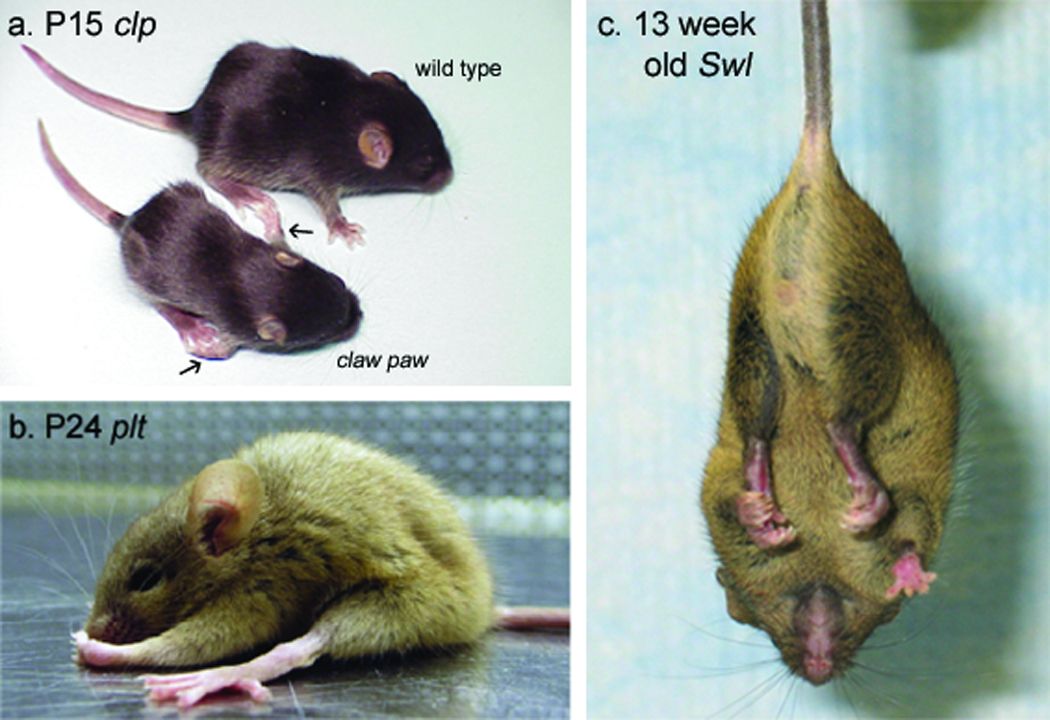Figure 2.

The causative mutations underlying several mouse models of peripheral nerve disorder have recently been identified. a, A P15 claw paw mutant and wild type littermate. The claw paw mutation, which results in abnormal forelimb posture (arrows) and hypomyelination in the PNS, was identified in Lgi4, a gene with no previous links to the PNS. The phenotype of the claw paw mouse suggests Lgi4 plays a role in myelination and peripheral nerve development. Reproduced with permission [23]. b, A P24 pale tremor mutant. Investigation of the pale tremor mouse, which is characterized by weakness, an abnormal gait, and loss of large-diameter axons in the PNS, led to the identification of a mutation in Fig4, a PtdIns(3,5)P25-phosphatase, as well as mutations in four unrelated human patients with a peripheral neuropathy that is now designated CMT4J. Reproduced with permission [31]. c, A 13 week-old sprawling mutant. The sprawling mouse’s sensory neuropathy is characterized by an abnormal posture, retraction of the hind limbs when suspended by the tail (shown here), and reduced numbers of muscle spindles. The sprawling genetic defect was found in the cytoplasmic dynein heavy chain 1 gene (Dync1h1), demonstrating a new function for a gene previously linked to late-onset motor neuropathy. Reproduced with permission [29].
